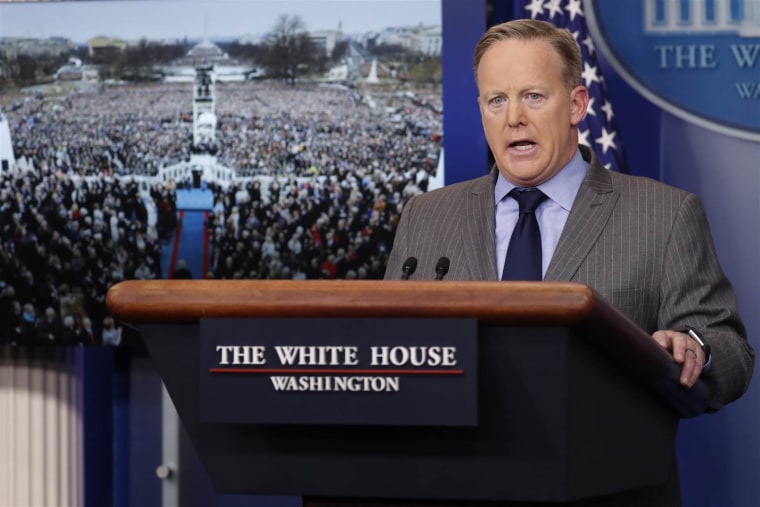In his remarks at MacDill Air Force Base yesterday, Donald Trump argued that "the very, very dishonest press doesn't want to report" on terrorist attacks. News organizations, the president added, "have their reasons." He didn't elaborate on what these imagined motivations might be.Soon after, reporters asked White House Press Secretary Sean Spicer what in the world Trump was talking about. "We'll provide a list later," Spicer said, vowing to back up the president's ridiculous rhetoric with some kind of proof.Part of me wondered whether we'd ever actually see such a list -- perhaps it'd be released with Trump's secret tax returns -- but in a pleasant surprise, Spicer's office did, in fact, release a list of 78 incidents that occurred between September 2014 to December 2016.So, does the document back up Trump's ridiculous rhetoric? Not even a little. Let's unwrap the White House's latest effort:* Media coverage: Many of the terrorist attacks listed on the document point to actual examples of deadly terrorism, but as an NBC News report documented, those attacks received wall-to-wall coverage. Trump said the press "doesn't want to report" on terrorist attacks, which led Sean Spicer's office to pull together a list of attacks that were reported on exhaustively. Even by Trump World standards, that's bizarre.* Dubious entries: Some of the entries on the White House list don't appear to be examples of terrorism, and other incidents produced zero casualties.* Sloppy White House work: Somehow, Spicer's office put together a list that repeatedly misspelled the word "attacker." The White House also misspelled "San Bernardino" and "Denmark." (The document, thankfully, made no reference to the Bowling Green Massacre.)* Omissions: The list of attacks is badly flawed, in part because of what's on it, but also because of what's not on it. The White House's document made no reference to deadly domestic attacks such as the shootings in Colorado Springs and Charleston; it overlooked a series of attacks in Israel; and as Micah Zenko noted, most mass-fatality attacks are in sub-Saharan Africa, and Spicer's list didn't mention any of them.In other words, what we're left with is an amateurish document thrown together carelessly by amateurish White House aides. Team Trump ought to find an effort like this embarrassing.
White House struggles to defend Trump's allegations of a cover-up
The White House tried to put together a list of terrorist attacks the media "didn't want to report on." The effort really didn't go well.
